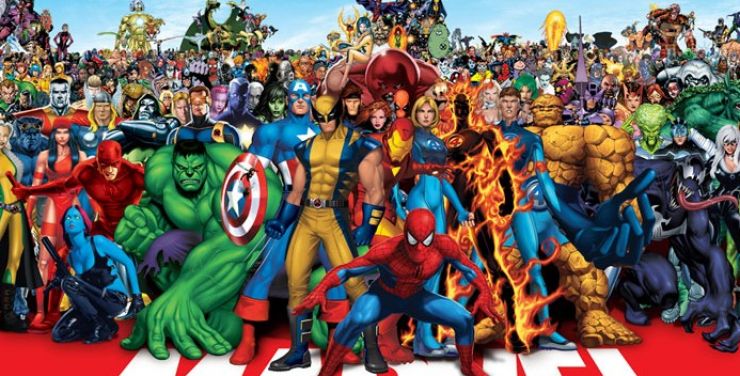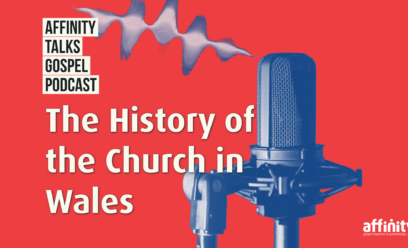Pretty Super: Behind the Mask of Society’s Fascination with Superheroes

In 2015, domestic comic book sales in the United States topped $940 million.[1] Lest you think all of this cash is generated from men’s bank accounts, market research has shown that 47% of comic fans are women.[2] With more comic material devoted and targeted directly to women – Marvel’s current Thor female being a case in point – some see this as likely to increase even more. That said, the divergence from classic brands within Marvel and DC – all for sake of ‘diversity’ – have not been well received. With few exceptions both male and female fans prefer the traditional, and yes, more ‘complementarian’, superhero storylines.
With easy to follow story lines, natural scripting, and graphic illustrations of characters and scenes, it stands to reason that comic superheroes are a favourite with movie script-writers, producers, directors, actors and fans. Some graphic novels that are not strictly speaking a part of any superhero universe, such as Frank Miller and Dark Horse Comic’s 300, have successfully been portrayed in a unique, almost frame-by-frame, way on film. While not done in quite the same way with live-action superhero films, it is not uncommon to recognise certain scenes as directly inspired by a particular comic. Box Office Mojo has listed over 120 superhero movies made since 1978, with combined earnings of over $17 billion – and things aren’t slowing down.
Comic book giants DC and Marvel will continue to go head-to-head in what I call the ‘Super-stakes’ with what is anticipated to be over twenty films set in their respective superhero universes over the next four years. If the significance of this is still not appreciated, consider the presence of The Avengers, The Avengers: Age of Ultron, Captain America: Civil War and the un-inspiringly named Iron-Man 3 in the worldwide all time highest grossing movie top fifteen. There are over twenty such movies in the United States all time highest grossing domestic top 100 (and almost that in the worldwide top 100).
So what is so attractive about superhero stories? What draws people to them? What lessons can we learn from them? How do they illustrate mankind’s nature, wants, needs and emotions? Is there intended allegory in the stories? Does this have any importance pastorally and in church life?
When super meets ordinary
Despite the extraordinary universe in which the stories are set, the primary themes of superhero stories are very normal and relatable. They appeal to human conscience and morality and stir up emotions and residual desires that show both our wish to be and to have heroes.
Good
Superheroes – at least in their origin – reflected the reality of an ongoing war between good and evil. In a world falling apart, they have regularly reflected a very Judeo-Christian worldview, rooted in a sense of moral objectivity and absolute truth. They are loved because they present good and evil for what they are; they make it easy to pick sides; they recognise absolute truth and justice and that whatever bad may occur, what is good, right and true must always ultimately win. One superhero with perhaps a greater appreciation for absolute truth than others is Captain America. In one monologue he says:
‘Doesn’t matter what the press says. Doesn’t matter what the politicians or the mob say. Doesn’t matter if the whole country decides that something wrong is something right… when the mob and the press and the whole world tell you to move, your job is to plant yourself like a tree, beside the river of truth and tell the whole world “No. You move.”’
While many continue to abandon the concept of absolute, objective truth, their love of such heroes suggests that they still, in their conscience and hearts, know that it is this absolute and concrete objectivity that the world needs. Truth is not based on fads or trends or decided by culture; it is an unswerving and immovable standard, unaffected by human politics or legislature.
Captain America is not the originator of this idea of following truth and justice. The principle is found back in Psalm 1 in the Bible. These words point the way more clearly than even the best of superheroes:
‘Blessed is the man who walks not in the counsel of the wicked, nor stands in the way of sinners, nor sits in the seat of scoffers; but his delight is in the law of the LORD, and on his law he meditates day and night. He is like a tree planted by streams of water that yields its fruit in its season, and its leaf does not wither. In all that he does, he prospers.’ (Psalm 1:1-3)
Evil
In the earlier days of modern superhero stories, bad guys were often portrayed in outlandish, sometimes even comical, ways. This did not make their character or actions less evil; their humour and comical portrayal in some ways, paradoxically, made them that much more creepy. Characters such as Batman’s nemesis, the Joker, would eventually be developed to become increasingly more gritty in strategy, crime and general psychosis.
Sometimes subplots within superhero stories have now become so gut-wrenchingly realistic that it is possible to sympathise with Alfred the butler’s musing in the new film Justice League: ‘One misses the days of exploding, wind-up penguins.’ Other stories spectacularly portray in a vivid visual form the battle against truly demonic forces, including the recent Avengers vs. Ultron, Batman, Superman, and Wonder Woman vs. Doomsday and The Justice League vs Steppenwolf. In each of these, the heroes are portrayed as the good versus the demonic evil. Like any anti-Christ figure, at times the evil protagonists come in the guise of bringing good and justice into the world, but in such a way that is itself devoid of mercy and grace.
In The Avengers: Age of Ultron, Ultron philosophically muses of what he will bring to the world: ‘I was designed to save the world. People would look to the sky and see hope… I’ll take that from them first.’ Ultron bills himself as a saviour but he has no grace or love.
Elsewhere he says, ‘I was meant to be new. I was meant to beautiful. The world would’ve looked to the sky and seen hope, seen mercy. Instead, they’ll look up in horror.’ Ultron sees the chaos and destruction he metes out as a good thing and accomplishes his aim of delivering the world without compassion and with a cruelty as hard and cold as the vibranium metal he embodies.
In Batman vs. Superman: Dawn of Justice, the twisted and psychotic Lex Luthor regularly rants against God, his goodness and power. Portraying Clark Kent as the God figure, Luthor asserts that if God is all-powerful he cannot be all good, rooting his belief in that God did not keep his father from beating him. Luthor, in creating the Doomsday monster states: ‘If man won’t kill God, the Devil will do it.’ Luthor, embracing evil, is ultimately defeated along with Doomsday. His defeat comes at great cost and much destruction, with great sacrifice and the death of a hero.
Superheroes join us in our struggle
Most superhero stories have fairly predictable plot-lines. They consistently feature suffering and pain. Some go beyond physical pain and portray characters with deep emotional angst. This is no less true of the superheroes. In their origin stories we often see the hero shaped through much pain; young Bruce Wayne’s parents are shot dead in front of him, paving the way for his development into the Batman. Kal El’s parents send him to Earth as their own world meets its destruction. Comics and television shows like Smallville portray Kal El’s development on Earth as Clark Kent and the struggles he has in realising his superpowers. Peter Parker (Spider-man) is moulded by the tragic death of his uncle. Steve Rogers (Captain America) is a bullied, sickly and weak young man whose only attractive attribute initially is his good character. Superheroes don’t only live in a world of trouble; they are themselves troubled.
Upon taking on their mantles in their respective universes, it is not uncommon for superheroes to continue to face personal battles and difficulties, often feeling helpless and hopeless in the face of evil. In Batman vs Superman: Dawn of Justice, Alfred warns an aging and broody Bruce Wayne of ‘The fever, the rage, the feeling of powerlessness that turns good men cruel.’ Captain America: Civil War depicts infighting and personal struggles shared by the Avengers. These stories point to the struggles not only with trouble around us but against those within.
While superheroes are portrayed as seemingly invincible, they, like humans, can and do die. While it is common for the comic universe to kill off and subsequently resurrect some of its characters – the Messiah-inspired Superman being most notable – others die of all too familiar causes. In The Death of Captain Marvel (1980), it is cancer that kills off the hero. After Civil War (the comic book, not the movie), Steve Rogers takes off his mask as Captain America and turns himself in to S.H.I.E.L.D. In Captain America Vol. 5, No. 25, The ‘Sentinel of Liberty’ is assassinated while imprisoned. It the mortality of these superheroes that make them all the more appealing. Though ‘super’ and otherworldly, they are simultaneously very human and prone to being abused, misunderstood, slandered, humiliated and even killed. There is something heroic in the humiliation of a superheroes death – and even more so, if the hero is vindicated in regaining life.
Pastoral implications
We are fascinated by superhero stories because, in their own way, they seem so relatable and so real. They don’t sugar-coat the realities of the world. They portray physical, mental, emotional and spiritual trouble. They deal with the constant conflict between good and evil. They remind us of what we already know; the world is in a lot of trouble and we want and need a hero who can come into our troubled world, join in our pain, and defeat the evil and suffering.
Natalie Haynes, writing for the BBC, says:
‘We are surely drawn to heroes and superheroes because they illuminate the human condition – and they do so precisely because they operate at a slightly inhuman level. Heroes are like us, but more so: stronger, cleverer, faster. They suffer from the same human frailties as we do, but because of their superior powers, these struggles are played out in a more dramatic arena than our own. Superheroes impose order on a chaotic world, which can often seem to be filled with nefarious powers (from natural disasters to supervillains) that mere mortals cannot identify or hope to fight.’[3]
Acclaimed comic book writer Grant Morrison has added: ‘We love our superheroes because they refuse to give up on us. We can analyse them out of existence, kill them, ban them, mock them, and still they return, patiently reminding us of who we are and what we wish we could be.’[4]
Pastorally, these stories help illustrate mankind’s deepest longings. We want just, wholesome societies which are very different to our own. We need healing in our land and we know that we need a hero. We expect heroism of our leaders but they all fall short. Superhero stories hold out hope and present an escape from reality where we can dream of something better than what we have.
But the truth is not far away from each one us. There is something much better that we can have and someone that we can point to as better than the best of superheroes.
Jesus is better
The Bible’s greatest hero, indeed, the world’s greatest hero, is the historical and non-fictional Jesus Christ. His story doesn’t gloss over the difficulties of human life; rather, it puts political, personal, psychological and spiritual turmoil on full display. Everything that attracts people to fictitious superhero stories is true of the historically verifiable story of Jesus Christ. This is why it is important to appreciate comic book fiction and use it, where possible, to point to the facts found in Jesus.
Just as the pagan Greek philosophers and poets were used by Paul in a redemptive way, those of us involved in Christian ministry should at least be acquainted with our modern culture, its philosophies, interests and obsessions. Engaging people with words and illustrations they recognise and understand can be greatly used evangelistically. Pointing people to the Messianic inspiration and Christian symbolism that underpins Superman’s story can be surprising to them and a real conversation starter. Even with darker stories, such as the X-men franchise’s most recent film, Logan, the Judeo-Christian and Messianic themes are undeniable.
Jesus is the hero of heroes: fully God and fully man, miraculously born to save the world, living to die as a sacrifice for all who believe, humiliated, rejected by his own, and yet patient and faithful in fulfilling his mission of deliverance – historically verifiable and resurrected from the dead. He accomplished where our superheroes fail; he is the one who will return and save the world once and for all.
Lois Lane comments at the end of Justice League: ‘The truest darkness is not absence of light but that light will never return… But the light always returns… Hope is real. You can see it. All you have to do is look up into the sky.’
Indeed. While Superman is not real, Jesus is and he is coming again.
‘He was in the world, and the world was created through him, and yet the world did not recognise him. He came to his own, and his own people did not receive him. But to all who did receive him, he gave them the right to be children of God, to those who believe in his name, who were born, not of natural descent, or of the will of the flesh, or of the will of man, but of God. The Word became flesh and dwelt among us. We observed his glory, the glory as the one and only Son from the Father, full of grace and truth.’ (John 1:11-14)
‘Men of Galilee, why do you stand looking into heaven? This Jesus, who was taken up from you into heaven, will come in the same way as you saw him go into heaven.’ (Acts 1:11)
Regan King serves as a church planter and pastor at The Angel Church, Islington, London and is a communications officer at Christian Concern.
(This article was originally published in the Affinity Social Issues Bulletin for March 2018.)
[1] ‘Comic Book Sales by Year’, www.comichron.com
[2] Brett Schenker, ‘Market Research Says 46.67% of Comic Fans are Female’, The Beat: The News Blog of Comics Culture, 2 May 2014
[3] Natalie Haynes, Before Marvel and DC: Superheroes of the Ancient World, 19 August 2015.
[4] Grant Morrison, Supergods: What Masked Vigilantes, Miraculous Mutants, and a Sun God from Smallville Can Teach Us About Being Human, Epilogue.
Related articles
Stay connected with our monthly update
Sign up to receive the latest news from Affinity and our members, delivered straight to your inbox once a month.



